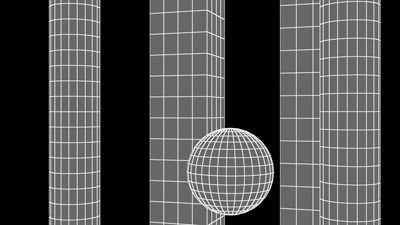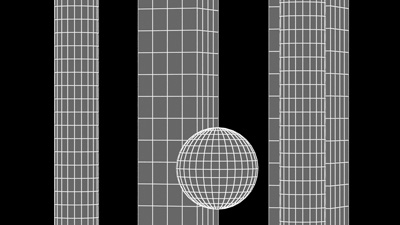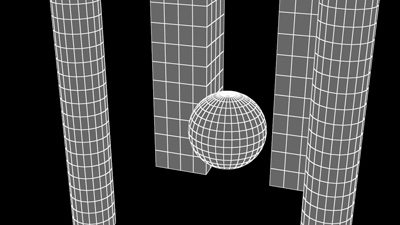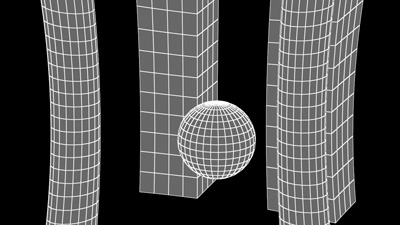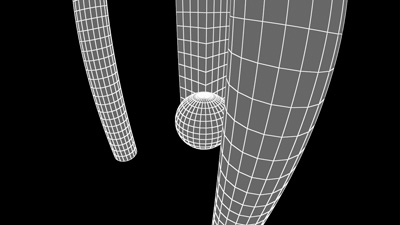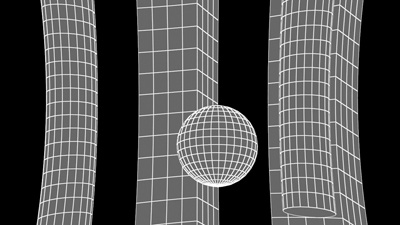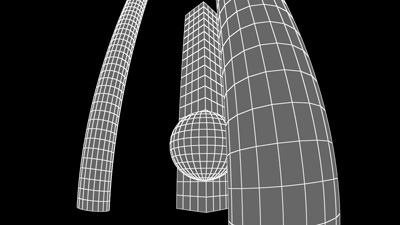
Middle 50 mm lens
Horizontal lines of the cylinder tend to be a frown above the horizon line, a smile below, and straight across at the horizon line.
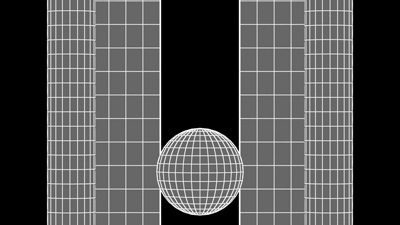
Middle 200 mm lens (Telephoto)
Flattens horizontal lines of the cylinder out so everything is pretty straight. Image flattens out where all objects seem to be on the same plane in space.

Middle 200 mm lens (Telephoto Pincushion Distortion)

Middle 16 mm lens (Wide Angle)
Horizontal lines of the cylinder make deeper frowns and smiles, objects close to camera appear to be even closer, and far away objects appear even farther.

Middle 16 mm lens (Wide Angle Barrel Distortion)

Birds Eye 50 mm lens
Horizontal lines of the cylinder tend to all be smiles because the horizon line is above the canvas

Birds Eye 200 mm lens (Telephoto)
Horizontal lines of the cylinder are all smiles, but they are the same smile depth everywhere instead of getting deeper towards the bottom of the canvas. Image flattens out where all objects seem to be on the same plane in space.

Birds Eye 200 mm lens (Telephoto Pincushion Distortion)

Birds Eye 16 mm lens (Wide Angle)
Horizontal lines of the cylinder make larger smiles, objects close to camera appear to be even closer, and far away objects appear even farther. All objects appear to converge towards a single point off the canvas at the bottom.

Birds Eye 16 mm lens (Wide Angle Barrel Distortion)
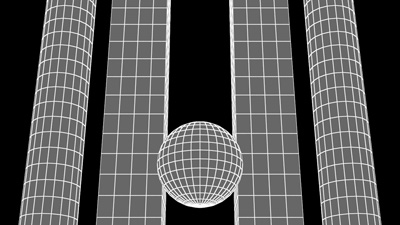
Worms Eye 50 mm lens
Horizontal lines of the cylinder tend to all be frowns because the horizon line is below the canvas

Worms Eye 200 mm lens (Telephoto)
Horizontal lines of the cylinder are all frowns, but they are the same frown depth everywhere instead of getting deeper towards the bottom of the canvas. Image flattens out where all objects seem to be on the same plane in space.

Worms Eye 200 mm lens (Telephoto Pincushion Distortion)

Worms Eye 16 mm lens (Wide Angle)
Horizontal lines of the cylinder make larger frowns, objects close to camera appear to be even closer, and far away objects appear even farther. All objects appear to converge towards a single point off the canvas at the top.
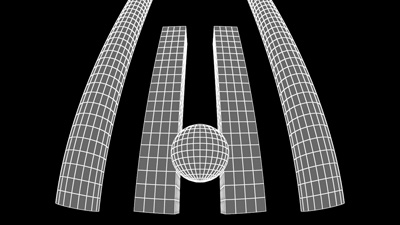
Birds Eye 16 mm lens (Wide Angle Barrel Distortion)
